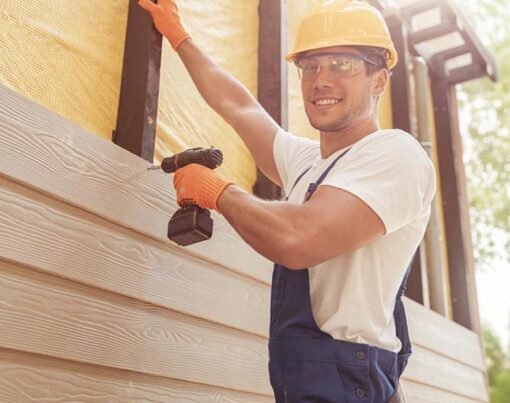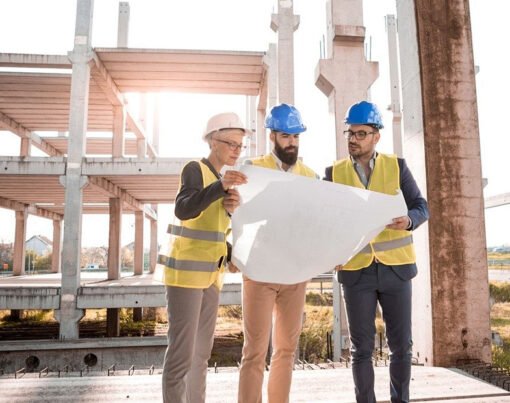Before a house demolition project can begin, pre-demolition inspections and rapid building inspections are crucial to ensure the safety of workers, neighbours, and the environment. These inspections are often misunderstood and sometimes viewed as an unnecessary expense.
But in this blog post, we’ll debunk the common myths and misconceptions about pre-demolition inspections and rapid building inspections and explain why they are essential for any house demolition project.
Table of Contents
Myth #1: Pre-demolition inspections are unnecessary
Pre-demolition inspections are conducted to identify potential hazards such as asbestos, lead, or other hazardous materials that can pose a risk to workers or the environment during the demolition process. These inspections are crucial to ensure that the demolition process does not harm the workers, the community, or the environment.
Imagine if a building was demolished without proper inspections, and it contained asbestos. The asbestos fibres could become airborne, leading to respiratory problems for workers and the community. Pre-demolition inspections would have identified the presence of asbestos, and proper precautions could have been taken to ensure that the asbestos fibres do not become airborne.
Myth #2: Rapid building inspections are not as comprehensive as traditional inspections
Rapid pest inspections are a quick and efficient way to assess the presence of pests in a building. These inspections may sometimes use modern technology such as thermal imaging, moisture meters, and pest detection dogs to identify any pests that could pose a risk during the demolition process. Rapid pest inspections are as comprehensive as traditional pest inspections and, in some cases, even more so.
Traditional pest inspections may only be able to identify pests that are visible to the naked eye or damage caused by pests, while rapid pest inspections can identify hidden pests that are not visible. Rapid pest inspections can also provide a more accurate assessment of the building’s pest problem, as they use modern technology to provide a detailed analysis of the building’s pest infestation.
Myth #3: Pre-demolition inspections and rapid building inspections are too expensive
While pre-demolition inspections and rapid building inspections do come with a cost, the cost of not conducting these inspections can be much higher. The cost of not identifying potential hazards before demolition can lead to costly legal battles, environmental damage, and harm to the workers or the community.
If a building is demolished without proper inspections, and it contains hazardous materials, the cost of the cleanup and potential legal battles can far exceed the cost of the inspections. It’s always better to identify potential hazards beforehand and take the necessary precautions to avoid any unwanted expenses.
Myth #4: Building inspectors are not qualified to conduct pre-demolition inspections
Building inspectors are qualified professionals who have the necessary skills and knowledge to conduct pre-demolition inspections. They are trained to identify potential hazards and can provide recommendations on how to mitigate any risks. Building inspectors play a crucial role in ensuring that the demolition process is safe and does not harm workers, the community, or the environment.
Myth #5: Rapid building inspections are not as accurate as traditional inspections
Much like the 2nd myth above, rapid building inspections use modern technology to provide a more accurate assessment of the building’s pest problem. These inspections are as accurate as traditional pest inspections and, in some cases, even more so. Rapid pest inspections use thermal imaging, moisture meters, pest detection dogs, and other advanced technologies to provide a detailed analysis of the building’s pest infestation, which can help identify any potential pest risks that may not be visible to the naked eye.
Myth #6: Pre-demolition inspections take too much time
Another myth surrounding pre-demolition inspections is that they take too much time. While it’s true that conducting an inspection does require time and effort, the benefits of identifying potential hazards before a demolition project far outweigh the time invested in conducting an inspection.
Pre-demolition inspections typically take anywhere from a few hours to a few days, depending on the size and complexity of the building. During this time, the inspector will conduct a thorough examination of the property, including checking for asbestos, lead, and other hazardous materials. They’ll also identify any structural issues, such as weak walls or unstable foundations, that could pose a danger during the demolition process.
Myth #7: Rapid building inspections are only for small projects
Another myth surrounding rapid building inspections is that they’re only useful for small projects. In reality, rapid building inspections can be extremely beneficial for large-scale house demolition projects.
These inspections use advanced technology to quickly and efficiently identify potential pest infestations in a building. This technology allows inspectors to cover a large area in a short amount of time, making it ideal for large-scale house demolition projects even before the project begins.
Myth #8: Only old buildings require pre-demolition inspections or rapid building inspections
Many people assume that only old buildings require pre-demolition inspections or rapid building inspections. However, even newer buildings can have hazards or defects that need to be identified before a demolition project can begin.
Newer buildings may contain hazardous materials, such as lead or asbestos if not identified before, that need to be identified and addressed before the demolition project can begin. Newer buildings may also have structural issues, such as weak walls or unstable foundations, that could pose a danger during the demolition process.
Myth #9: Pre-demolition inspections and rapid building inspections are only necessary for commercial buildings.
This is another common myth that is simply not true. Pre-demolition inspections and rapid building inspections are important for all types of buildings, including residential properties. In fact, residential properties can often present unique challenges that make these inspections even more important.
Older homes are likely to contain hazardous materials such as lead paint or asbestos that need to be identified and safely removed before the demolition can take place. Similarly, homes that were built on unstable ground or with poor construction techniques may pose a risk during the demolition process.
Conclusion
Pre-demolition inspections and rapid building inspections are crucial steps that should not be overlooked in the construction and demolition process. Although they may come at a cost, the benefits of conducting these inspections far outweigh the initial spending. It’s important to recognize that cutting corners in this process can lead to significant consequences and risks to public safety. So individuals and organizations must prioritize the safety of their communities and take the necessary steps to ensure proper inspections are conducted.










